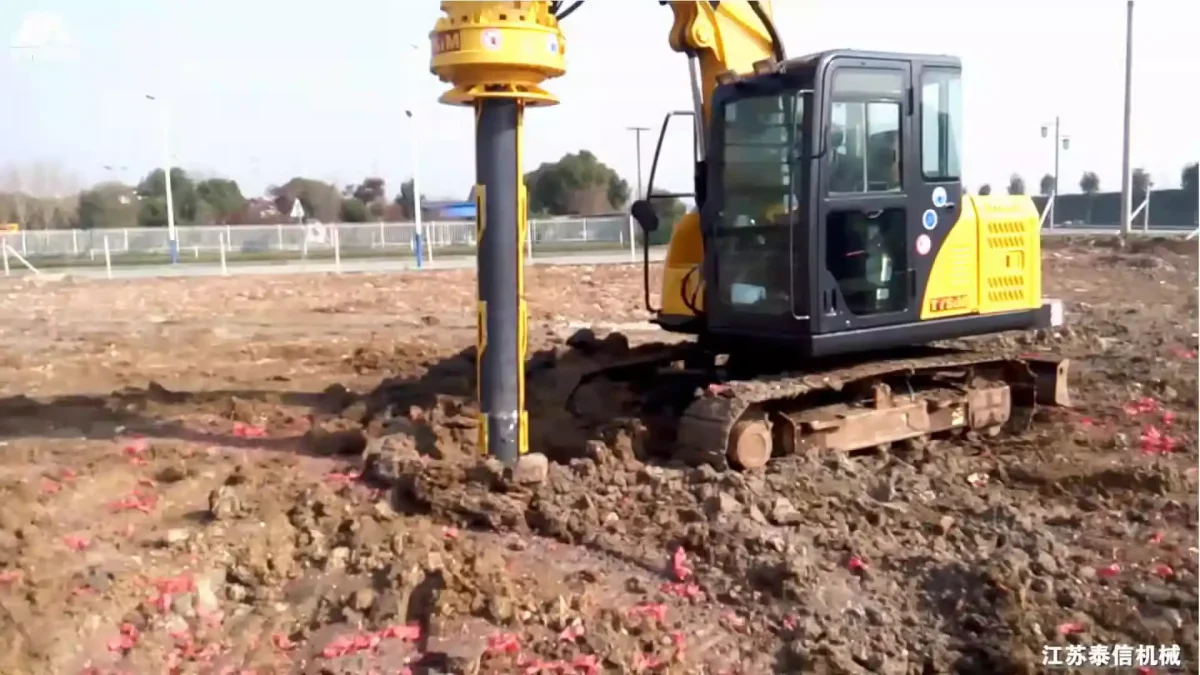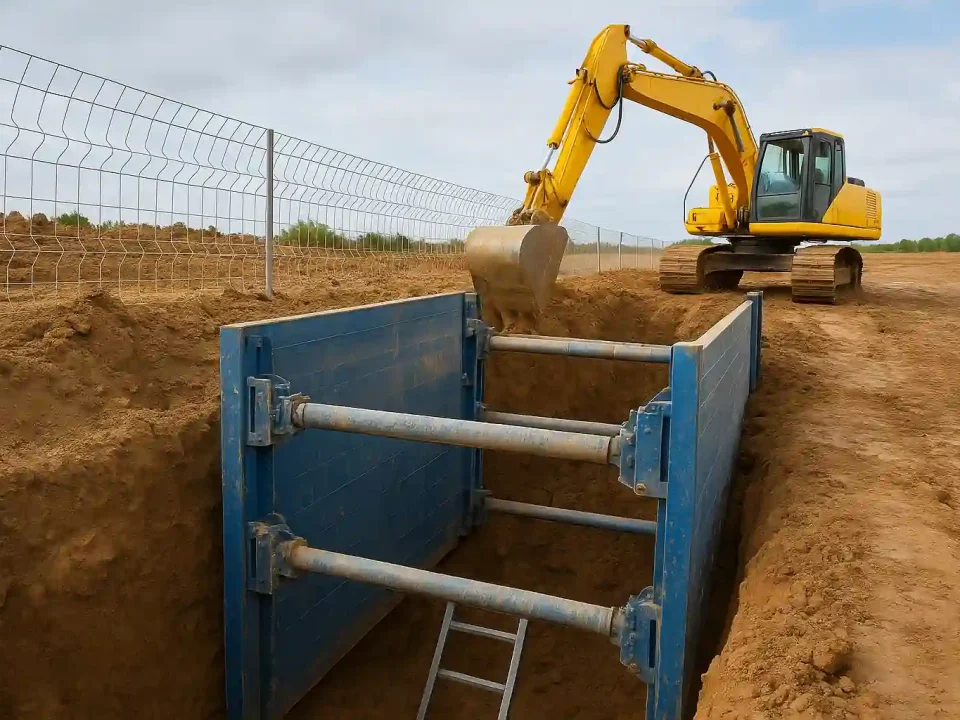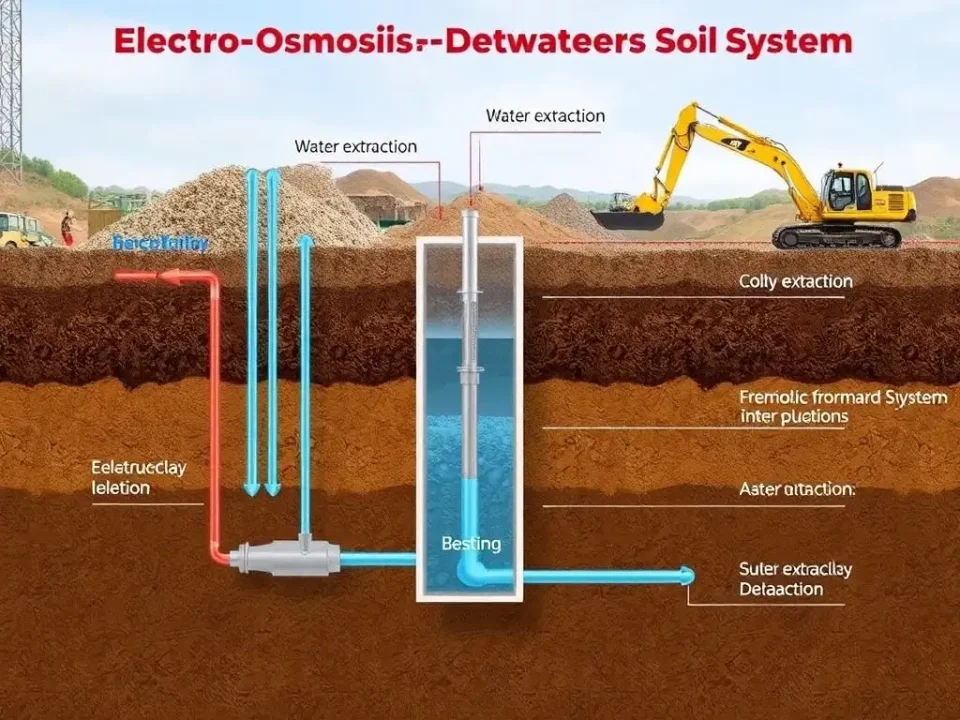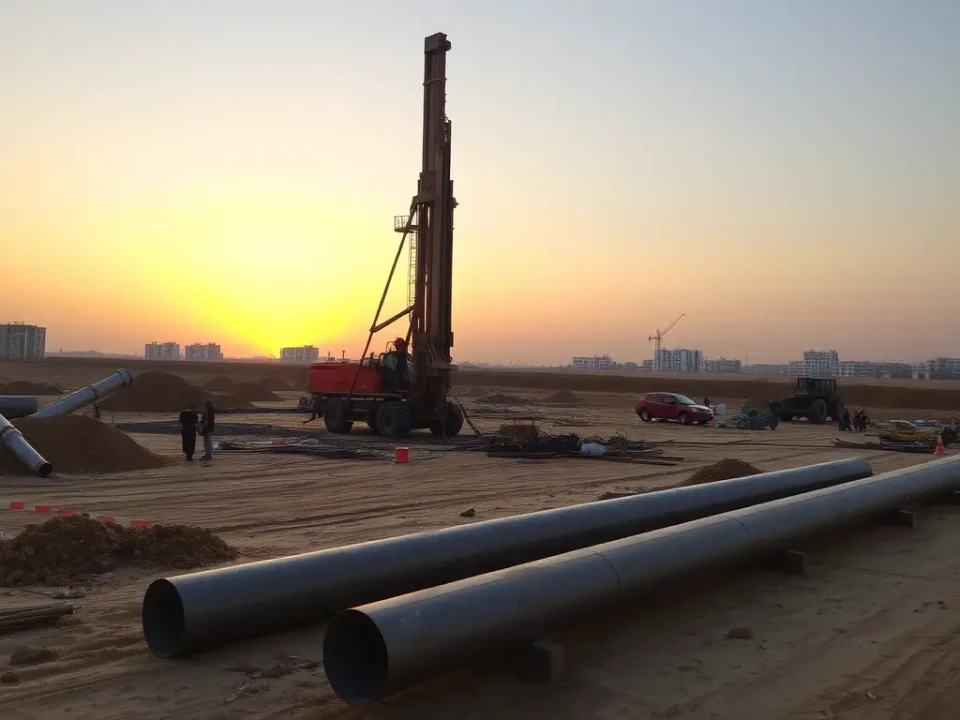
9 Factors for Choosing a Temporary Shoring for Excavation
February 10, 2025
Essential Guide to Pile Foundations for House
April 8, 2025Mini piles construction is an innovative foundation solution that utilizes small-diameter piles to support structures, especially in challenging soil conditions. These piles, typically less than 12 inches in diameter, are designed to transfer loads to deeper, more stable soil layers. Mini piles are particularly advantageous in urban environments where space is limited and vibrations from construction activities must be minimized. Their installation is less intrusive and can be completed quickly, making them an ideal choice for both new constructions and retrofitting existing structures. This technique offers durability, stability, and cost-effectiveness, ensuring the longevity of the built environment.
Advantages of Mini Piles Construction
Mini piles construction offers several advantages that make it an attractive option for various engineering projects:
- Space Efficiency: Mini piles require less space than traditional piles, making them ideal for urban areas with limited working space.
- Reduced Vibration: The installation process minimizes vibrations, which is crucial in sensitive environments, such as near existing structures or underground utilities.
- Quick Installation: Mini piles can be installed rapidly, reducing overall project timelines and minimizing disruption to surrounding areas.
- Versatility: They can be used in a variety of soil conditions, including weak or unstable soils, providing a reliable foundation solution.
- Cost-Effective: The efficiency and speed of mini piles installation often lead to lower labor costs and reduced overall project expenses.
- Load-Bearing Capacity: Despite their small size, mini piles can support significant loads, making them suitable for various structures, from residential buildings to commercial projects.
- Environmental Considerations: Their installation often results in less excavation and soil disturbance, which can be beneficial for the surrounding ecosystem.
Overall, mini piles construction provides a reliable and efficient foundation solution that addresses many challenges faced in modern construction.
When to Use Mini Piles
Mini piles are an ideal foundation solution in various construction scenarios. Here are some situations where mini piles are particularly beneficial:
- Limited Space: In urban areas or sites with restricted access, mini piles can be installed where traditional piling methods may not fit.
- Weak or Unstable Soils: Mini piles are effective in challenging soil conditions, such as loose, soft, or unstable soils, where conventional foundations might fail.
- Existing Structures: When underpinning or retrofitting existing buildings, mini piles can provide additional support without causing significant disruption.
- Vibration-Sensitive Areas: In locations where minimizing vibrations is crucial (e.g., near historic buildings or sensitive equipment), mini piles can be installed with minimal disturbance.
- Environmental Constraints: When environmental regulations limit excavation or soil disturbance, mini piles offer a less invasive alternative.
- High Load Requirements: For structures that require substantial load-bearing capacity in limited space, mini piles can effectively transfer loads to deeper, more stable soil layers.
- Temporary Structures: Mini piles can be used for temporary installations, such as scaffolding or shoring, offering stability without permanent alterations to the site.
- Sloped or Uneven Terrain: In areas with challenging topography, mini piles can be adapted to different angles and depths to provide a solid foundation.
By considering these factors, engineers and builders can determine the suitability of mini piles for specific construction projects, ensuring safety and stability.
Methods of Mini Piles Construction
Mini piles construction employs several methods to ensure effective installation and load-bearing capacity. Here are the primary methods used:
- Drilled Mini Piles: This method involves drilling a hole into the ground to the required depth. A reinforcement cage is then inserted, and concrete is poured to create the pile. This technique is suitable for varying soil conditions and allows for precise placement.
- Driven Mini Piles: In this method, prefabricated piles are driven into the ground using a pile driver. This approach is effective in dense soils and provides immediate load-bearing capabilities. Driven mini piles are often used when quick installation is necessary.
- Grouted Mini Piles: Grouted mini piles involve drilling a hole and then injecting a grout mixture into the space around the pile. This method enhances the load-bearing capacity by creating a bond between the pile and the surrounding soil.
- Bored Mini Piles: Similar to drilled piles, bored mini piles are created by boring a hole into the ground. However, this method often uses a larger diameter and may include casing to prevent collapse during installation.
- Helical Mini Piles: Helical piles have a helical blade attached to the shaft, allowing for easy installation by screwing them into the ground. This method is particularly effective in weak or loose soil conditions and provides immediate load capacity.
- Micropile Method: Micropiles are small-diameter piles that can be installed in various configurations. They are often used for underpinning existing structures or in areas with limited access.
Each of these methods has its own set of advantages and is chosen based on site-specific conditions, load requirements, and project goals.
Comparison Table: Mini Piles vs. Traditional Piling Methods
Mini piles differ from traditional piling methods in several key aspects, making them a preferred choice for specific construction scenarios:
| Aspect | Mini Piles | Traditional Piling Methods |
| Diameter Size | Less than 12 inches | Larger diameters (varies widely) |
| Installation Techniques | Smaller, less intrusive equipment | Larger drilling rigs or pile drivers |
| Vibration Levels | Minimal vibration | Higher vibration levels |
| Load-Bearing Capacity | Engineered for effective load transfer | Supports heavier loads due to larger size |
| Cost and Time Efficiency | Quicker installation, lower labor costs | Longer timelines, higher labor costs |
| Soil Conditions | Effective in challenging soils | May struggle in loose or unstable soils |
| Environmental Impact | Lower impact due to minimal disruption | Higher impact from noise and excavation |
In summary, mini piles offer a versatile, efficient, and less intrusive alternative to traditional piling methods, making them ideal for modern construction challenges.
Materials Used in Mini Pile Construction
Mini pile construction involves various materials that ensure durability, stability, and load-bearing capacity. Here are the primary materials used:
- Concrete: High-strength concrete is the primary material for mini piles, providing the necessary structural integrity. It is often reinforced with steel to enhance its load-bearing capabilities.
- Steel Reinforcement: Steel bars or mesh are used within the concrete to improve tensile strength and prevent cracking. This reinforcement is crucial for supporting heavy loads and ensuring the longevity of the piles.
- Grout: In cases where grouted mini piles are used, a cement-based grout is injected into the surrounding soil to enhance the bond between the pile and the soil, increasing load-bearing capacity.
- Casing: For bored mini piles, a steel or plastic casing may be used to prevent soil collapse during installation. The casing helps maintain the integrity of the hole until the concrete is poured.
- Helical Plates: In helical mini piles, steel plates with helical blades are attached to the shaft. These plates help in screwing the pile into the ground and provide additional load-bearing capacity.
- Pressure Injections: In some methods, pressure-injected materials are used to improve soil conditions around the piles, enhancing stability and load distribution.
- Protective Coatings: To prevent corrosion, especially in harsh environments, protective coatings may be applied to the steel reinforcement and casings.
These materials work together to create a robust foundation solution, ensuring that mini piles can effectively support various structures under diverse conditions.
Piling Companies Near Me in Kuwait: Aramenco Guide for Reliable Solutions
Common Challenges in Mini Piles Construction
While mini piles offer many advantages, there are also several challenges that can arise during their construction. Here are some common issues:
- Soil Variability: Inconsistent soil conditions can affect the performance of mini piles. Unexpected changes in soil type or strength can complicate installation and load-bearing capacity.
- Installation Equipment Limitations: The specialized equipment required for mini pile installation may not be readily available on-site, leading to delays and increased costs.
- Access Constraints: While mini piles are designed for tight spaces, extreme access limitations can still pose challenges, requiring innovative solutions or adjustments to installation methods.
- Alignment and Positioning: Ensuring proper alignment and positioning of mini piles can be difficult, particularly in confined spaces, potentially affecting their effectiveness.
- Quality Control: Maintaining consistent quality during the mixing and pouring of concrete and grout is crucial. Variability can lead to weakened piles.
- Environmental Impact: Although mini piles are less disruptive than traditional methods, they still pose some environmental concerns, such as groundwater contamination during drilling.
- Load Testing: Accurate load testing is essential to confirm the performance of mini piles. However, conducting these tests can be challenging, especially in sensitive areas.
- Cost Management: While mini piles can save costs, unexpected issues during installation (such as unanticipated soil conditions) can lead to budget overruns.
- Regulatory Compliance: Navigating local regulations and obtaining necessary permits can be complex, potentially delaying the project.
- Worker Safety: Ensuring the safety of workers during installation is paramount, especially in confined or challenging environments.
Addressing these challenges requires careful planning, thorough site assessments, and collaboration among engineers, contractors, and stakeholders to ensure successful mini pile construction.
Enhance Your Project Stability with Aramenco Piling Services in Kuwait
Aramenco offers comprehensive piling services in Kuwait that ensure robust stability for your engineering structures. By driving deep columns into the soil to reach stable layers, we facilitate effective load distribution and prevent unwanted settlement of buildings. Our piling solutions are essential for guaranteeing long-term safety and durability, making your projects more resilient. Choose Aramenco for excellence in construction and a commitment to lasting structural integrity.
FAQ
Is mini piling the best option for your project?
Mini piling is often the best option for projects with limited space, weak soil conditions, or the need for minimal disruption, especially near existing structures. A site assessment is crucial to determine suitability.
What are mini piles in construction?
Mini piles are small-diameter foundation elements, usually less than 12 inches, used to support structures by transferring loads to deeper, stable soil layers. They can be installed using various techniques, including drilled, driven, and grouted methods.
Is mini piling expensive?
Mini piling can be cost-effective compared to traditional piling methods, especially in challenging environments. However, total costs depend on site conditions, labor, and equipment requirements.
How deep can mini piles go?
Mini piles can typically reach depths of 20 to 100 feet, depending on soil conditions and load requirements. Some projects may require even deeper installations to reach stable strata.




